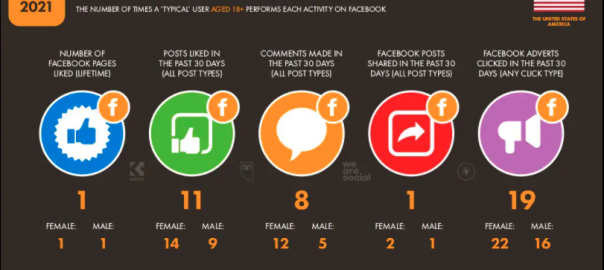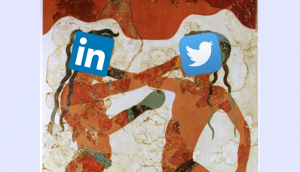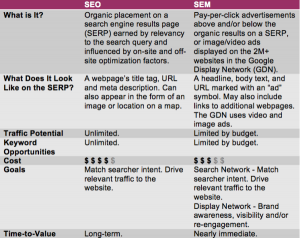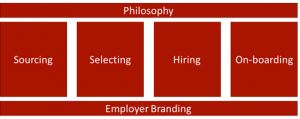I recently discovered some incredibly interesting social media advertising research produced by Travis Chambers and his firm. They analyzed $ 80,000,000 in social ad spend covering 30,000 different creative assets to try and figure out what kind of ad types are most effective on social media.
And frankly, what they discovered will probably surprise you and make you rethink your social media ad creation strategies going forward.
The Results of the Social Media Ad Effectiveness Research
After crunching all of the numbers, Travis’ team found that 7 Foundational Ads represented the highest of the high performers. Per Travis’ team, in order they are:
Spokesperson Video: A simple video — typically about a minute, featuring a talking head, usually a salesperson or representative of the company doing a pitch for your product or service.
Product Demo: This one is pretty simple. It’s a demonstration of your product. A basic example of your product or service in action.
Social Proof/Evidence: You saying your product is good is one thing. Having someone else say your product is good is a GREAT thing. Look for social proof such as impressive press features, content posted by influencers, or just simple user-generated content that you can share.
Closer Ads: These are ads that are going to play more into urgency — overcoming common objections, sending add-to-cart reminders, or even post-purchase ads with a thank you from the founder that offers an additional discount on another product.
Case Study: A Case study has one purpose, to empirically support the claim that you are making. These can be clinical trials or a simple before/after or comparison video.
Lifestyle Ad: These videos are traditionally what you would see from a company like Nike, Febreze, or Red Bull. They focus on the more aspirational elements — how they make you feel. Showing you the product in use in a natural environment.
Unboxing: This really focuses on user experience. Show your product on the doorstep of a customer, create a creative stop motion unboxing video. Show what a customer can expect the minute they rip open the package and utilize your product for the first time.
What Is The KEY Takeaway From The Research?
Of the top seven most effective social media advertising formats, SIX of them can be classified as a form of infomercial and the second most effective format—Product Demo—is absolutely an infomercial. But even more than the others, Spokesperson Video, Social Proof/Evidence, Closer Ad, Case Study and Unboxing are all core elements of the classic infomercial format made famous by folks like Ron Popeil, Suzanne Somers, Billy Mays (not to be confused with Willie Mays).
Break down any successful infomercial and they’ll usually contain five key parts:
- First they’ll identify a problem you’re having right now
- They’ll make a promise—typically that this product solves that problem you’re having better or easier or cheaper than how you currently solve that problem. Or they’ll make a promise that their offering makes it easier to solve that problem you have and currently are not solving—think weight loss commercials.
- Often they’ll include some kind of before/after comparison. Think about a Case Study ad—while it’s not necessarily a before and after comparison, it serves the same purpose.
- There will be a limited time frame to buy. That’s the Closer Ad from Travis’ study.
- They’ll sweeten the pot with some kind of bonus offer when you buy. That’s another aspect of the Closer Ad listed above.
So what Travis’ research is telling us is that the most effective ad format on social media is… wait for it… AN INFOMERCIAL!
Why Do Social Media Users Prefer Infomercials?
As I read through Travis’ research, I realized that it made perfect sense when you considered his data triangulated with a few other perspectives:
First, I considered his data through a purely anecdotal lens. What are people doing when they scroll through social media and what frame of mind are they in when surfing their socials? You can disagree with me, but my hypothesis is that most of the time folks scroll on social media when they’re bored or need a distraction. That makes them open to discovery. The reason you view your friends’ social posts is to LEARN about what is happening in their life, or maybe because you have a bad case of FOMO and you’re looking to see what you missed—or weren’t invited to  . Either way, the idea of presenting an ad that gives you a chance to learn something new or discover a solution makes sense to me.
. Either way, the idea of presenting an ad that gives you a chance to learn something new or discover a solution makes sense to me.
Second, there is recent data to support my hypothesis above. Hootsuite just released their 2021 Global Report and the US portion of the report has some pretty interesting data. While TV ads ranked first for new brand discovery (37.6%), social media clocked in at an impressive sixth with 25.7% of respondents indicating they used the platform as a primary way to discover new brands.
That same report showed that even when consumers were in active information search mode, social media was listed fourth (31.7% said it was a primary research platform) versus the winner—search engines (duh) at 58.1%.
Third, additional data from GWI’s Zeitgeist Feb 2020 study of US/UK Internet users showed that across all age groups, “give me product info” was the #1 thing users wanted in online advertising with 40% of Gen Z, 45% of Millennials, 52% of Gen Xers and 57% of Boomers agreeing with the statement.
Fourth, and finally, Clutch Advertising Research found that 51% of users disliked “ads that are uninformative.” But maybe the most interesting datapoint from this advertising was that respondents felt that the least trustworthy advertising mediums are “online” (41%) and “social media” (38%). Hmmmm… so respondents don’t trust these mediums as much as say radio, TV, or print. Maybe that’s another reason why Travis’ research found that ads that follow an infomercial format perform best: because they’re demonstrative, and thus consumers are more comfortable trusting them vs a traditional “brand ad” that just says “believe me because I, the brand, tell you to.”
Why Does This Matter?
That same Clutch Report showed consumers make purchases after seeing or hearing an ad on social media (42%). And the Hootsuite research seems to confirm the same. According to the Hootsuite research, U.S. Facebook users were just as likely to click on an ad each month (19 times) as they were to like, comment, and share posts COMBINED (20 times).
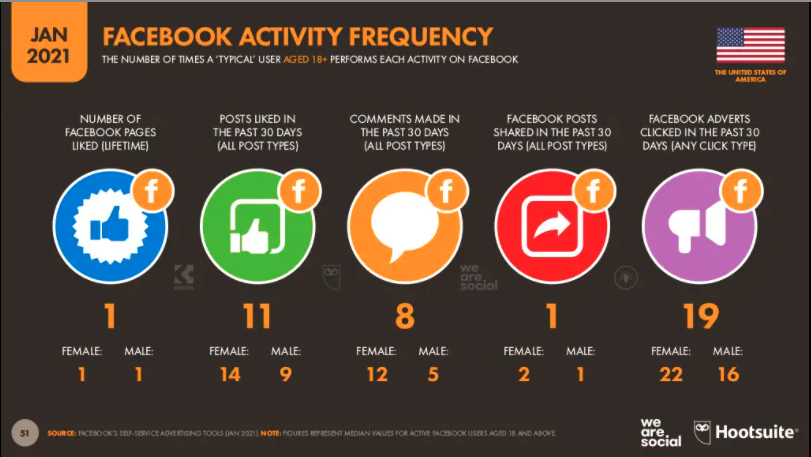
Consumers today have been trained to accept advertising in their social media feeds. And the research shows they’re just fine with it as long as the ads are relevant, informative and for products and services that solve a problem or fill a need they’re currently experiencing.
Digital & Social Articles on Business 2 Community
(34)
